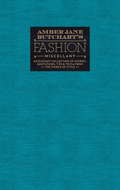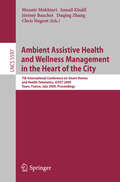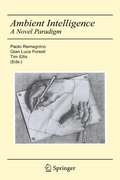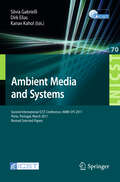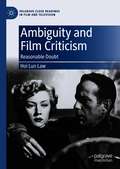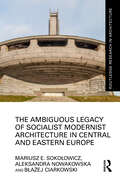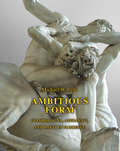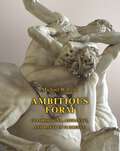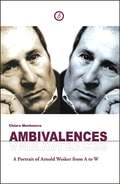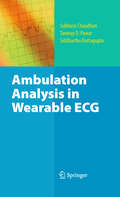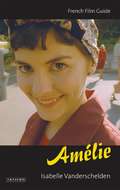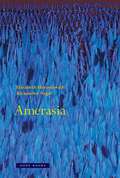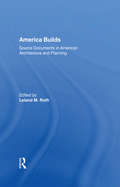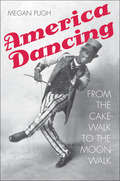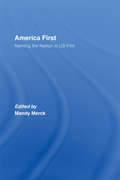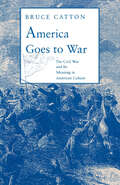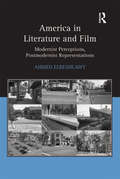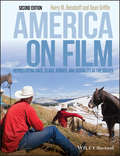- Table View
- List View
Ambassadors by Hans Holbein the Younger (tactile)
by RnibDate: 1533. Medium: Oil on oak. Size: 207 cm high by 210cm wide. Information about the painting The painting portrays two educated, wealthy and powerful diplomats; Jean de Dintville, the French Ambassador to England and his friend, George de Selve, Bishop of Lavaur. Both men were in London in 1533 to safeguard relations between the King of France and Henry VIII at a time of great religious and political uncertainty. Jean de Dinteville commissioned this painting from Holbein (1497/8-1543) to hang in his chateau of Polisy. Overview description of the painting [The letter/letters given in brackets refer to labelling on the tactile images.] This huge panel, painted with meticulous attention to detail is one of the earliest portraits combining the depiction of two full-length figures that are also life-size in scale. Jean de Dentville is on our left and George de Selve on the right. They stand a step back from us on a pavement patterned with coloured pieces of stone, similar to the floor in Westminster Abbey. Facing to the front, they gaze out of the painting and engage us with inscrutable expressions. Between them is a large piece of furniture with two shelves on which are arrayed a variety of objects, giving an indication of their wide-ranging interests. Jean de Dentville rests his left elbow (LE) and George de Selve his right on the top shelf (R). At the bottom near the left corner of the painting, the perplexing image of a distorted skull stretches diagonally across the foreground to the right. Behind the two men, a rich, green damask curtain is parted in the top left corner to reveal a tiny silver crucifix (CF).
Amber Jane Butchart's Fashion Miscellany: An Elegant Collection of Stories, Quotations, Tips & Trivia from the World of Style
by Amber ButchartStyles come and and go, but fashion has an enduring appeal, a rich history, and an everyday practical relevance for millions.Launched to coincide with London Fashion Week 2014, this book offers a host of new perspectives on a classic subject. Professional fashion expert Amber Jane Butchart casts a quizzical eye over fashion's oddities, revealing the histories of such garments as the Adelaide boot, the origins of many technical terms and a host of entertaining quotes and aphorisms from the field's most colourful names.Specially-commissioned line illustrations from Penelope Beech complete the book, making it a feast for the eyes as well as treat for the stylish soul.
Ambient Assistive Health and Wellness Management in the Heart of the City: 7th International Conference on Smart Homes and Health Telematics, ICOST 2009, Tours, France, July 1-3, 2009, Proceedings (Lecture Notes in Computer Science #5597)
by Mokhtari Mounir Ismail Khalil Jérémy Bauchet DaQing Zhang Chris D. NugentThis book constitutes the refereed proceedings of the 7th International Conference On Smart Homes and and Health Telematics, ICOST 2009, held in Tours, France, in July 2009. The 27 revised full papers and 20 short papers presented were carefully reviewed and selected from numerous submissions. The papers are organized in topical sections on cognitive assistance and chronic diseases management; ambient living systems; service continuity and context awareness; user modeling and human-machine interaction; ambient intelligence modeling and privacy issues, human behavior and activities monitoring.
Ambient Intelligence: A Novel Paradigm
by Gian Luca Foresti Tim EllisAmbient Intelligence (AmI) is an integrating technology for supporting a pervasive and transparent infrastructure for implementing smart environments. Such technology is used to enable environments for detecting events and behaviors of people and for responding in a contextually relevant fashion. AmI proposes a multi-disciplinary approach for enhancing human machine interaction. Ambient Intelligence: A Novel Paradigm is a compilation of edited chapters describing current state-of-the-art and new research techniques including those related to intelligent visual monitoring, face and speech recognition, innovative education methods, as well as smart and cognitive environments. The authors start with a description of the iDorm as an example of a smart environment conforming to the AmI paradigm, and introduces computer vision as an important component of the system. Other computer vision examples describe visual monitoring for the elderly, classic and novel surveillance techniques using clusters of cameras installed in indoor and outdoor application domains, and the monitoring of public spaces. Face and speech recognition systems are also covered as well as enhanced LEGO blocks for novel educational purposes. The book closes with a provocative chapter on how a cybernetic system can be designed as the backbone of a human machine interaction.
Ambient Intelligence for Scientific Discovery: Foundations, Theories, and Systems (Lecture Notes in Computer Science #3345)
by Yang CaiMany difficult scientific discovery tasks can only be solved in interactive ways, by combining intelligent computing techniques with intuitive and adaptive user interfaces. It is inevitable to use human intelligence in scientific discovery systems: human eyes can capture complex patterns and relationships, along with detecting the exceptional cases in a data set; the human brain can easily manipulate perceptions to make decisions. Ambient intelligence is about this kind of ubiquitous and autonomous human interaction with information. Scientific discovery is a process of creative perception and communication, dealing with questions like: how do we significantly reduce information while maintaining meaning, or how do we extract patterns from massive data and growing data resources. Originating from the SIGCHI Workshop on Ambient Intelligence for Scientific Discovery, this state-of-the-art survey is organized in three parts: new paradigms in scientific discovery, ambient cognition, and ambient intelligence systems. Many chapters share common features such as interaction, vision, language, and biomedicine.
Ambient Media and Systems: Second International ICST Conference, AMBI-SYS 2011, Porto, Portugal, March 24-25, 2011, Revised Selected Papers (Lecture Notes of the Institute for Computer Sciences, Social Informatics and Telecommunications Engineering #70)
by Silvia Gabrielli Dirk Elias Kanav KaholThis book constitutes the thoroughly refereed post-conference proceedings of the Second International ICST Conference on Ambient Systems and Media, AMBI-SYS 2011, held in Porto, Portugal in March 2011. The 10 revised full papers presented were carefully reviewed and selected and cover a wide range of topics as innovative solutions in the field of ambient assisted living, providing a new physical basis for ambient intelligence by also leveraging on contributions offered by interaction design methods and approaches.
Ambiguity and Film Criticism: Reasonable Doubt (Palgrave Close Readings in Film and Television)
by Hoi Lun LawThis book defends an account of ambiguity which illuminates the aesthetic possibilities of film and the nature of film criticism. Ambiguity typically describes the condition of multiple meanings. But we can find multiple meanings in what appears unambiguous to us. So, what makes ambiguity ambiguous? This study argues that a sense of uncertainty is vital to the concept. Ambiguity is what presses us to inquire into our puzzlement over a movie, to persistently ask “why is it as it is?” Notably, this account of the concept is also an account of its criticism. It recognises that a satisfying assessment of what is ambiguous involves both our reason and doubt; that is, reason and doubt can work together in our practice of reading. This book, then, considers ambiguity as a form of reasonable doubt, one that invites us to reflect on our critical efforts, rethinking the operation of film criticism.
The Ambiguous Legacy of Socialist Modernist Architecture in Central and Eastern Europe (Routledge Research in Architecture)
by Mariusz E. Sokołowicz Aleksandra Nowakowska Błażej CiarkowskiThis book examines the unique socialist-modernist architecture built in the twentieth century in Central and Eastern Europe as a source of heritage and of existing and potential value for the present and future generations. Due to the historical context in which it was created, such architecture remains ambiguous. On the one hand, the wider public associates it with the legacy of the unpleasant period of the real socialist economic regime. Yet, on the other hand, it is also a manifestation of social modernization and the promotion of a significant proportion of the population. This book focuses particularly on concrete heritage, a legacy of modernist architecture in Central and Eastern Europe, and it was this material that enabled their rebuilding after World War II and modernization during the following decades. The authors search for the value of modernist architecture and using case studies from Poland, Bulgaria, Northern Macedonia, Lithuania and Slovenia verify to what extent this heritage is embedded in the local socio-economic milieu and becomes a basis for creating new values. They argue that the challenge is to change the ways we think about heritage, from looking at it from the point of view of a single monument to thinking in terms of a place with its own character and identity that builds its relation to history and its embeddedness in the local space. Furthermore, they propose that the preservation of existing concrete structures and adapting them to modern needs is of great importance for sustainability. With increasing awareness of the issue of preserving post-war architectural heritage and the strategies of dissonant heritage management, this multidisciplinary study will be of interest to architecture historians, conservators, heritage economists, urban planners and architects.
The Ambiguous Legacy of Socialist Modernist Architecture in Central and Eastern Europe (Routledge Research in Architecture)
by Mariusz E. Sokołowicz Aleksandra Nowakowska Błażej CiarkowskiThis book examines the unique socialist-modernist architecture built in the twentieth century in Central and Eastern Europe as a source of heritage and of existing and potential value for the present and future generations. Due to the historical context in which it was created, such architecture remains ambiguous. On the one hand, the wider public associates it with the legacy of the unpleasant period of the real socialist economic regime. Yet, on the other hand, it is also a manifestation of social modernization and the promotion of a significant proportion of the population. This book focuses particularly on concrete heritage, a legacy of modernist architecture in Central and Eastern Europe, and it was this material that enabled their rebuilding after World War II and modernization during the following decades. The authors search for the value of modernist architecture and using case studies from Poland, Bulgaria, Northern Macedonia, Lithuania and Slovenia verify to what extent this heritage is embedded in the local socio-economic milieu and becomes a basis for creating new values. They argue that the challenge is to change the ways we think about heritage, from looking at it from the point of view of a single monument to thinking in terms of a place with its own character and identity that builds its relation to history and its embeddedness in the local space. Furthermore, they propose that the preservation of existing concrete structures and adapting them to modern needs is of great importance for sustainability. With increasing awareness of the issue of preserving post-war architectural heritage and the strategies of dissonant heritage management, this multidisciplinary study will be of interest to architecture historians, conservators, heritage economists, urban planners and architects.
Ambitious Form: Giambologna, Ammanati, and Danti in Florence (PDF)
by Michael W. ColeAmbitious Form describes the transformation of Italian sculpture during the neglected half century between the death of Michelangelo and the rise of Bernini. The book follows the Florentine careers of three major sculptors--Giambologna, Bartolomeo Ammanati, and Vincenzo Danti--as they negotiated the politics of the Medici court and eyed one another's work, setting new aims for their art in the process. Only through a comparative look at Giambologna and his contemporaries, it argues, can we understand them individually--or understand the period in which they worked. Michael Cole shows how the concerns of central Italian artists changed during the last decades of the Cinquecento. Whereas their predecessors had focused on specific objects and on the particularities of materials, late sixteenth-century sculptors turned their attention to models and design. The iconic figure gave way to the pose, individualized characters to abstractions. Above all, the multiplicity of master crafts that had once divided sculptors into those who fashioned gold or bronze or stone yielded to a more unifying aspiration, as nearly every ambitious sculptor, whatever his training, strove to become an architect.
Ambitious Form: Giambologna, Ammanati, and Danti in Florence
by Michael W. ColeAmbitious Form describes the transformation of Italian sculpture during the neglected half century between the death of Michelangelo and the rise of Bernini. The book follows the Florentine careers of three major sculptors--Giambologna, Bartolomeo Ammanati, and Vincenzo Danti--as they negotiated the politics of the Medici court and eyed one another's work, setting new aims for their art in the process. Only through a comparative look at Giambologna and his contemporaries, it argues, can we understand them individually--or understand the period in which they worked. Michael Cole shows how the concerns of central Italian artists changed during the last decades of the Cinquecento. Whereas their predecessors had focused on specific objects and on the particularities of materials, late sixteenth-century sculptors turned their attention to models and design. The iconic figure gave way to the pose, individualized characters to abstractions. Above all, the multiplicity of master crafts that had once divided sculptors into those who fashioned gold or bronze or stone yielded to a more unifying aspiration, as nearly every ambitious sculptor, whatever his training, strove to become an architect.
Ambivalences: Portrait of Arnold Wesker from A to W
by Arnold Wesker Chiara MonteneroAmbivalences is a document of Arnold Wesker in conversation with the Italian academic Chiara Montenero. Here he discusses his ideas on art and drama with a particular focus on some of his most enduring characters. Betraying his reputation as theatre's perennial outsider Ambivalences finds Wesker in generous and engaging form, offering a valuable insight into the mind of one of the definitive post-war British dramatists. First published in Italy, Ambivalences is now available to read in English for the first time.
Ambulation Analysis in Wearable ECG
by Subhasis Chaudhuri Tanmay D. Pawar Siddhartha DuttaguptaAmbulation Analysis in Wearable ECG demonstrates why, due to recent developments, the wearable ECG recorder substantiates a significant innovation in the healthcare field. About this book: Examines the viability of wearable ECG in cardiac monitoring Includes chapters written by practitioners who have personally developed such hardware to write about the hardware details Bridges the gap between hardware and algorithmic developments with chapters that specifically discuss the hardware aspects and their corresponding calibration issues Presents a useful text for both practitioners and researchers in biomedical engineering and related interdisciplinary fields Assumes basic familiarity with digital signal processing and linear algebra.
Amélie: French Film Guide (Ciné-File French Film Guides)
by Isabelle VanderscheldenLe Fabuleux destin d'Amélie Poulain was the surprise boxoffi ce success of 2001, with nine million spectators in France, and more than 30 million worldwide. The fi lm turned Audrey Tautou into an international star, in her iconic role as Amélie, a naïve French Parisian who devotes herself to mending the lives of the people around her. Shot on location in Paris, the fi lm combines poetic and magical realism with stylish cinematography, original use of colour, state-of-the-art special effects, and an evocative soundtrack; together these have produced a popular fi lm of universal appeal. Isabelle Vanderschelden examines the fi lm's production within the French fi lm industry. She analyzes the issues of genre and narrative that it presents so well. She looks in depth at the fi lm's key scenes, as well as at Jeunet's distinctive visual style and cinematography and his use of digital technology. The national and international receptions of Amélie are explored to establish why the fi lm has caught the public imagination and whether it marks a renewal in the cultural diversity and distinctive identity of the French fi lm industry. This book will be essential reading for cinema lovers and students alike.
Amerasia
by Elizabeth Horodowich Alexander NagelA connected world as imagined by early modern European artists, mapmakers, and writers, where Asia and the Americas were on a continuumAmerica and Asia mingled in the geographical and cultural imagination of Europe for well over a century after 1492. Through an array of texts, maps, objects, and images produced between 1492 and 1700, this compelling and revelatory study immerses the reader in a vision of a world where Mexico really was India, North America was an extension of China, and South America was marked by a variety of biblical and Asian sites. It asks, further: What does it mean that the Amerasian worldview predominated at a time when Europe itself was coming into cultural self-definition? Each of the chapters focuses on a particular artifact, map, image, or book that illuminates aspects of Amerasia from specific European cultural milieus. Amerasia shows how it was possible to inhabit a world where America and Asia were connected either imaginatively when viewed from afar, or in reality when traveling through the newly encountered lands. Readers will learn why early modern maps regularly label Mexico as India, why the “Amazonas” region was named after a race of Asian female warriors, and why artifacts and manuscripts that we now identify as Indian and Chinese are entangled in European collections with what we now label Americana.Elizabeth Horodowich and Alexander Nagel pose a dynamic model of the world and of Europe’s place in it that was eclipsed by the rise of Eurocentric colonialist narratives in the nineteenth and twentieth centuries. To rediscover this history is an essential part of coming to terms with the emergent polyfocal global reality of our own time.
Amerasia
by Elizabeth Horodowich Alexander NagelA connected world as imagined by early modern European artists, mapmakers, and writers, where Asia and the Americas were on a continuumAmerica and Asia mingled in the geographical and cultural imagination of Europe for well over a century after 1492. Through an array of texts, maps, objects, and images produced between 1492 and 1700, this compelling and revelatory study immerses the reader in a vision of a world where Mexico really was India, North America was an extension of China, and South America was marked by a variety of biblical and Asian sites. It asks, further: What does it mean that the Amerasian worldview predominated at a time when Europe itself was coming into cultural self-definition? Each of the chapters focuses on a particular artifact, map, image, or book that illuminates aspects of Amerasia from specific European cultural milieus. Amerasia shows how it was possible to inhabit a world where America and Asia were connected either imaginatively when viewed from afar, or in reality when traveling through the newly encountered lands. Readers will learn why early modern maps regularly label Mexico as India, why the “Amazonas” region was named after a race of Asian female warriors, and why artifacts and manuscripts that we now identify as Indian and Chinese are entangled in European collections with what we now label Americana.Elizabeth Horodowich and Alexander Nagel pose a dynamic model of the world and of Europe’s place in it that was eclipsed by the rise of Eurocentric colonialist narratives in the nineteenth and twentieth centuries. To rediscover this history is an essential part of coming to terms with the emergent polyfocal global reality of our own time.
America Builds: Source Documents in American Architecture and Planning
by Leland M. RothArchitecture requires a broad definition. It involves more than simply questions of style, esoteric theory, or technical progress; it is the physical record of a culture's relationship to its technology and the land, and, most important, of the system of values concerning men's relationships with one another. Hence this volume, like my Concise Hist
America Builds: Source Documents in American Architecture and Planning
by Leland M. RothArchitecture requires a broad definition. It involves more than simply questions of style, esoteric theory, or technical progress; it is the physical record of a culture's relationship to its technology and the land, and, most important, of the system of values concerning men's relationships with one another. Hence this volume, like my Concise Hist
America Dancing: From the Cakewalk to the Moonwalk
by Megan PughThe history of American dance reflects the nation’s tangled culture. Dancers from wildly different backgrounds learned, imitated, and stole from one another. Audiences everywhere embraced the result as deeply American. Using the stories of tapper Bill "Bojangles" Robinson, Ginger Rogers and Fred Astaire, ballet and Broadway choreographer Agnes de Mille, choreographer Paul Taylor, and Michael Jackson, Megan Pugh shows how freedom—that nebulous, contested American ideal—emerges as a genre-defining aesthetic. In Pugh’s account, ballerinas mingle with slumming thrill-seekers, and hoedowns show up on elite opera house stages. Steps invented by slaves on antebellum plantations captivate the British royalty and the Parisian avant-garde. Dances were better boundary crossers than their dancers, however, and the issues of race and class that haunt everyday life shadow American dance as well. Deftly narrated, America Dancing demonstrates the centrality of dance in American art, life, and identity, taking us to watershed moments when the nation worked out a sense of itself through public movement.
America First: Naming the Nation in US Film
by Mandy MerckAt a time when the expanded projection of US political, military, economic and cultural power draws intensified global concern, understanding how that country understands itself seems more important than ever. This collection of new critical essays tackles this old problem in a new way, by examining some of the hundreds of US films that announce themselves as titularly 'American'. From early travelogues to contemporary comedies, national nomination has been an abiding characteristic of American motion pictures, heading the work of Porter, Guy-Blaché, DeMille, Capra, Sternberg, Vidor, Minnelli and Mankiewicz. More recently, George Lucas, Paul Schrader, John Landis and Edward James Olmos have made their own contributions to Hollywood’s Americana. What does this national branding signify? Which versions of Americanism are valorized, and which marginalized or excluded? Out of which social and historical contexts do they emerge, and for and by whom are they constructed? Edited by Mandy Merck, the collection contains detailed analyses of such films as The Vanishing American, American Madness, An American in Paris, American Graffiti, American Gigolo, American Pie and many more.
America First: Naming the Nation in US Film
by Mandy MerckAt a time when the expanded projection of US political, military, economic and cultural power draws intensified global concern, understanding how that country understands itself seems more important than ever. This collection of new critical essays tackles this old problem in a new way, by examining some of the hundreds of US films that announce themselves as titularly 'American'. From early travelogues to contemporary comedies, national nomination has been an abiding characteristic of American motion pictures, heading the work of Porter, Guy-Blaché, DeMille, Capra, Sternberg, Vidor, Minnelli and Mankiewicz. More recently, George Lucas, Paul Schrader, John Landis and Edward James Olmos have made their own contributions to Hollywood’s Americana. What does this national branding signify? Which versions of Americanism are valorized, and which marginalized or excluded? Out of which social and historical contexts do they emerge, and for and by whom are they constructed? Edited by Mandy Merck, the collection contains detailed analyses of such films as The Vanishing American, American Madness, An American in Paris, American Graffiti, American Gigolo, American Pie and many more.
America in Literature and Film: Modernist Perceptions, Postmodernist Representations
by Ahmed ElbeshlawyUtilizing Lacan's psychoanalytic theory and Zizek's philosophical adaption of it, this book brings into dialogue a series of modernist and postmodernist literary works, films, and critical theory that are concerned with defining America. Ahmed Elbeshlawy demonstrates that how America is perceived in certain texts reveals not only the idealization or condemnation of it, but an imago, or constructed image of the perceiver as well. In turn, texts which particularly focus on demonstrating how other texts about America communicate an untrustworthy message themselves communicate an unreliable message, inventing and reinventing a series of imagos of America. These imagos refer to both idealized and deformed images of America constructed by the perceivers of America. The first part of this book is concerned with modernist perceptions of America, and includes discussion of Adorno, Benjamin, Kafka, D. H. Lawrence, as well as Emerson and Seymour Martin Lipset. The second part is dedicated to postmodernist representations of America, focusing on texts by Edward Said, Ihab Hassan, Susan Sontag, David Shambaugh and Charles W. Brooks, and films including Lars von Trier's Dogville and D.W. Griffith's Birth of a Nation.
America in Literature and Film: Modernist Perceptions, Postmodernist Representations
by Ahmed ElbeshlawyUtilizing Lacan's psychoanalytic theory and Zizek's philosophical adaption of it, this book brings into dialogue a series of modernist and postmodernist literary works, films, and critical theory that are concerned with defining America. Ahmed Elbeshlawy demonstrates that how America is perceived in certain texts reveals not only the idealization or condemnation of it, but an imago, or constructed image of the perceiver as well. In turn, texts which particularly focus on demonstrating how other texts about America communicate an untrustworthy message themselves communicate an unreliable message, inventing and reinventing a series of imagos of America. These imagos refer to both idealized and deformed images of America constructed by the perceivers of America. The first part of this book is concerned with modernist perceptions of America, and includes discussion of Adorno, Benjamin, Kafka, D. H. Lawrence, as well as Emerson and Seymour Martin Lipset. The second part is dedicated to postmodernist representations of America, focusing on texts by Edward Said, Ihab Hassan, Susan Sontag, David Shambaugh and Charles W. Brooks, and films including Lars von Trier's Dogville and D.W. Griffith's Birth of a Nation.
America on Film: Representing Race, Class, Gender, and Sexuality at the Movies (Wiley Desktop Editions Ser.)
by Harry M. Benshoff Sean GriffinAmerica on Film: Representing Race, Class, Gender, and Sexuality in the Movies, 2nd Edition is a lively introduction to issues of diversity as represented within the American cinema. Provides a comprehensive overview of the industrial, socio-cultural, and aesthetic factors that contribute to cinematic representations of race, class, gender, and sexuality Includes over 100 illustrations, glossary of key terms, questions for discussion, and lists for further reading/viewing Includes new case studies of a number of films, including Crash, Brokeback Mountain, and Quinceañera

